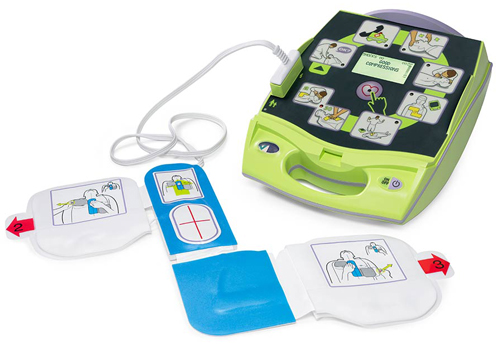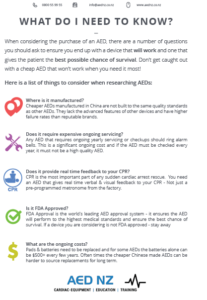
Debunking Common Myths About AEDs: Why You Should Invest in Life-Saving Defibrillators
In the world of emergency medical equipment, Automated External Defibrillators (AEDs) stand out as indispensable devices capable of saving lives during sudden cardiac arrests (SCAs). However, despite their proven effectiveness, several misconceptions persist about these life-saving tools. Let’s debunk some of the common myths surrounding AEDs and explore why investing in them is crucial for increasing survival rates when dealing with sudden cardiac arrest.
1. Myth: AEDs Are Complicated to Use
One of the most prevalent misconceptions about AEDs is that they require extensive training and expertise to operate. In reality, modern AEDs are designed with user-friendliness in mind. With clear voice prompts and simple instructions, these devices guide even untrained bystanders through the defibrillation process step by step. Studies have shown that individuals with no prior medical experience can effectively use an AED to deliver timely and potentially life-saving treatment during emergencies.
The ZOLL AED Plus we supply talks to you through the entire rescue, telling you what to do each step of the way, as well as providing real-time feedback to your CPR, ensuring you are pressing hard enough and fast enough – it doesn’t get much easier than that!
2. Myth: AEDs Can Cause Harm
There is a common fear that using an AED can potentially harm the individual experiencing a cardiac emergency. However, AEDs are equipped with built-in safety features and algorithms that analyze the heart rhythm and deliver shocks only when necessary. These devices are programmed to assess the patient’s condition accurately and deliver controlled electric shocks to restore normal heart rhythm. When used correctly, AEDs pose minimal risk and significantly increase the chances of survival for individuals in cardiac arrest.
3. Myth: AEDs Are Only Needed in Healthcare Settings
While AEDs are commonly associated with hospitals and medical facilities, their importance extends far beyond clinical settings. Sudden cardiac arrest can occur anywhere, at any time, affecting individuals of all ages and backgrounds. Therefore, the presence of AEDs in public spaces, schools, workplaces, and community centres is crucial for timely intervention and improved outcomes. Placing AEDs in easily accessible locations ensures that help is immediately available when a cardiac emergency strikes, potentially saving precious minutes and lives.
4. Myth: AEDs Are Expensive and Not Worth the Investment
Some individuals may hesitate to invest in AEDs due to concerns about cost-effectiveness. However, when compared to the potential cost of medical treatment, rehabilitation, or loss of life resulting from cardiac emergencies, the value of AEDs becomes evident. When viewed as a life-saving investment, the benefits of owning an AED far outweigh the initial expense – can you afford not to save a life?
5. Myth: AEDs Are Only for Healthcare Professionals
Another misconception is that only trained medical professionals can use AEDs effectively. In reality, AEDs are designed for use by individuals with varying levels of medical knowledge, including bystanders and laypersons. Basic training in CPR and AED use can enhance confidence and preparedness in responding to cardiac emergencies, but it is not a prerequisite for using an AED. By empowering communities with access to AEDs and education on their use, we can create safer environments and increase survival rates for individuals experiencing sudden cardiac arrest.
Conclusion
Dispelling myths and misconceptions about AEDs is essential for promoting their widespread adoption and enhancing community safety. These life-saving devices are user-friendly, safe, and invaluable in increasing the chances of survival during cardiac emergencies. By investing in AEDs and raising awareness about their importance, we can empower individuals and communities to respond effectively to sudden cardiac arrest and save lives.
Don’t let misconceptions deter you from taking proactive steps to enhance safety and well-being in your community. Explore the benefits of AED ownership and join the movement towards creating heart-safe environments where everyone has the opportunity to survive sudden cardiac arrest.
We recommend the ZOLL AED Plus Defibrillator
-
Compliant with New Zealand Resuscitation Council Guidelines
-
FDA Approved
-
ECG monitoring capability built into every device
-
Lowest cost of ownership
-
No yearly servicing plans or ongoing maintenance required
-
5 Year battery & pad life
-
7 Year Warranty
-
IP55 Rated
-
Made in USA


